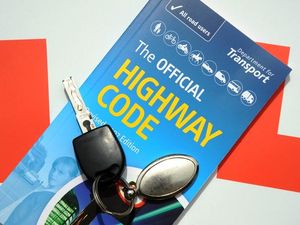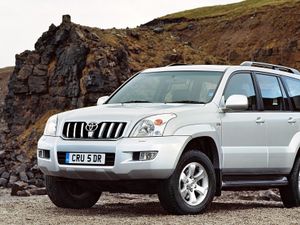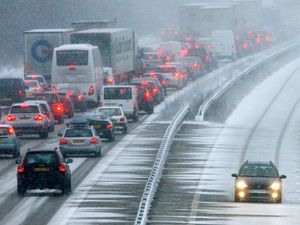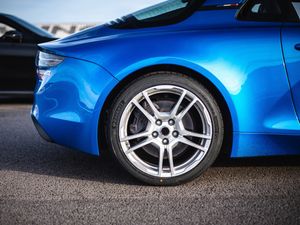The history of the driving test
We take a look back at the history of the UK’s driving licence and testing procedure

A change in the Highway Code has allowed learner drivers on to motorways in Britain for the first time.
Brought about in a bid to increase road safety, it took effect on June 4 and is being heralded by many as a brilliant move that will give newly qualified drivers greater confidence when heading out on the country’s fastest roads. Previously, those who’d just passed were allowed to take to the motorways with no prior experience.
But this is far from the first time that the driving test has changed over its 83-year history…
Pre-1934
The Highway Code was first published in 1931, setting out the rules of the roads in simple terms. But the roads were in chaos. Despite there being only 1.8 million cars in the country, 1933 saw more than 7,000 people killed on the roads and over 200,000 injured. Something had to change, and indeed something did – with the Road Traffic Act 1934.
By comparison, there are now well in excess of 35 million cars on the roads, and provisional government figures show there were 1,720 deaths and 174,510 casualties on British roads for the year ending September 2017 – the most recent period for which data is currently available.
1935
The act introduces testing for all new drivers. Costing seven shillings and sixpence (37½p), the test is voluntary at first, with a Mr R E L Beere of Kensington, London, becoming the first to pass it on March 16. The test becomes compulsory on June 1 for everyone who started driving on or after April 1, 1934 and by modern standards it seems very simple – only about half as long and including a reversing manoeuvre, three-point turn, hill start and emergency braking. Thousands of others soon follow Beere – 246,000 candidates apply for a licence and the pass rate is 63 per cent.
Licences have to be renewed every three years, and ‘L’ plates are made mandatory on cars until the test has been passed.
This brilliant video, produced by Ford in 1935, shows the way things used to be…
1939-1946
Driving tests are suspended for the duration of World War II and into 1946, with examiners helping with traffic duties and controlling fuel rationing instead. Rationing sees car usage drop dramatically but blackout conditions at night mean road casualties increase.
1946
Testing begins again on November 1.
1950
The pass rate falls to 50 per cent.
1956
The test fee, which had previously gone up to 10 shillings (50p), doubles to a pound. Testing is suspended again during the Suez Crisis – and examiners are once again relocated to help administer petrol rations.
1959
Driving examiner training is formalised, ensuring that a standardised test is carried out by competent examiners.
1962
People who have held more than seven provisional licences are required to take the practical test. Failure to do so can now lead the authorities to refuse another application.
1963
The ADI – Approved Driving Instructor – register is set up. It’s a voluntary but tough process, involving thorough written and practical tests for examiners.


1969
Vehicle licences are split into groups for the first time, with a separate licence now issued to those who have only learnt to drive automatic cars.

1973
The old red licence booklets are replaced by the green paper licence (which later becomes pink), with a computerised system in Swansea keeping tabs on records.
1975
Arm signals are dropped from the driving test, with the vast majority of cars on the road featuring electric turn signals.
1976
The requirement to renew a driving licence every three years is dropped. Full licences become valid until the holder is 70 years old, after which a three-year renewal period is once again applied.
1988
The Road Traffic Act 1988 comes into force. No direct changes are made to the driving test but examinations are now conducted in compliance with the act.
1990
The DVLC becomes the Driver and Vehicle Licensing Agency, and a decade of change for the driving test begins with examiners giving candidates a brief explanation of faults committed during the test, as well as offering advice on areas where improvement is needed.
Anybody accompanying a learner driver must now be over the age of 21 and have held a full licence for three years.

1996
The theory test is introduced. This separate, written examination replaces the questions asked about the Highway Code during the practical test.
1997
Photo ID is required at theory and practical examinations. Regulations are changed to give newly qualified drivers a two-year probationary period. If they receive six or more penalty points during this time they lose their licence and need to reapply for a provisional licence and take the theory and practical tests again.
1998
The photocard driving licence is introduced, to be used in conjunction with a paper counterpart.

2000
The touchscreen theory test is introduced, and candidates can now book their theory tests online for the first time.

2003
‘Show Me, Tell Me’ questions are added to the beginning of the practical test, demonstrating a candidate’s abilities with the car’s more minor controls and certain aspects of maintenance.
2007
The theory test is increased from 35 to 50 questions.
2010
The independent driving section of the test is added. Candidates are now expected to drive for 10 minutes following road signs or a set of previously given instructions with no input from the examiner.
2015
The paper counterpart to the photocard driving licence is abolished.
2017
Another major set of changes is introduced, with candidates now having to follow directions from a sat nav during the independent driving element. This reflects real-world driving conditions, where motorists often follow GPS directions.

2018
Learner drivers are allowed to take to motorways in England, Scotland and Wales for lessons if accompanied by a licensed instructor and in a car fitted with dual controls.





